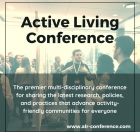We are pleased to announce an exciting new alliance between Active Living Research and GP RED to co-host and coordinate...
From the Greenbelt Towns Program, Lessons for Building and Sustaining Today's Active Living Communities
A greenbelt can be defined as any stretch of park, open space or other natural setting in a community. In the late 1930s, the federal government's Greenbelt Towns Program developed three communities with the goal of developing affordable towns with green space, recreational facilities and safe and convenient pedestrian access to neighbors and commercial, retail, educational and civic facilities. This case study will analyze the extent and manner in which the original design/planning policy of one of the original greenbelt communities, Greendale , Wisconsin , was adhered to or adapted over the last 65 years. In order to analyze and understand components of the design/planning policy related to active living today, the researchers will focus on access to the town and civic center, use of free-access community resources such as parks, and higher density, mixed-income residential communities that promote walking. Original documents will be examined, along with secondary source materials. Key participants such as business owners, town officials and long-term residents will also be interviewed.
Download the Case Study Policy Brief: Sustaining Smart Growth and Active Living: A Greenbelt Town and its Village Center, 70 Years Later.
Related Tools & Resources
STAY UP TO DATE
RECENTLY ADDED TOOLS & RESOURCES
MOVE! A BLOG ABOUT ACTIVE LIVING
The "Active Living Conference" aims to break down research and practice silos and...







